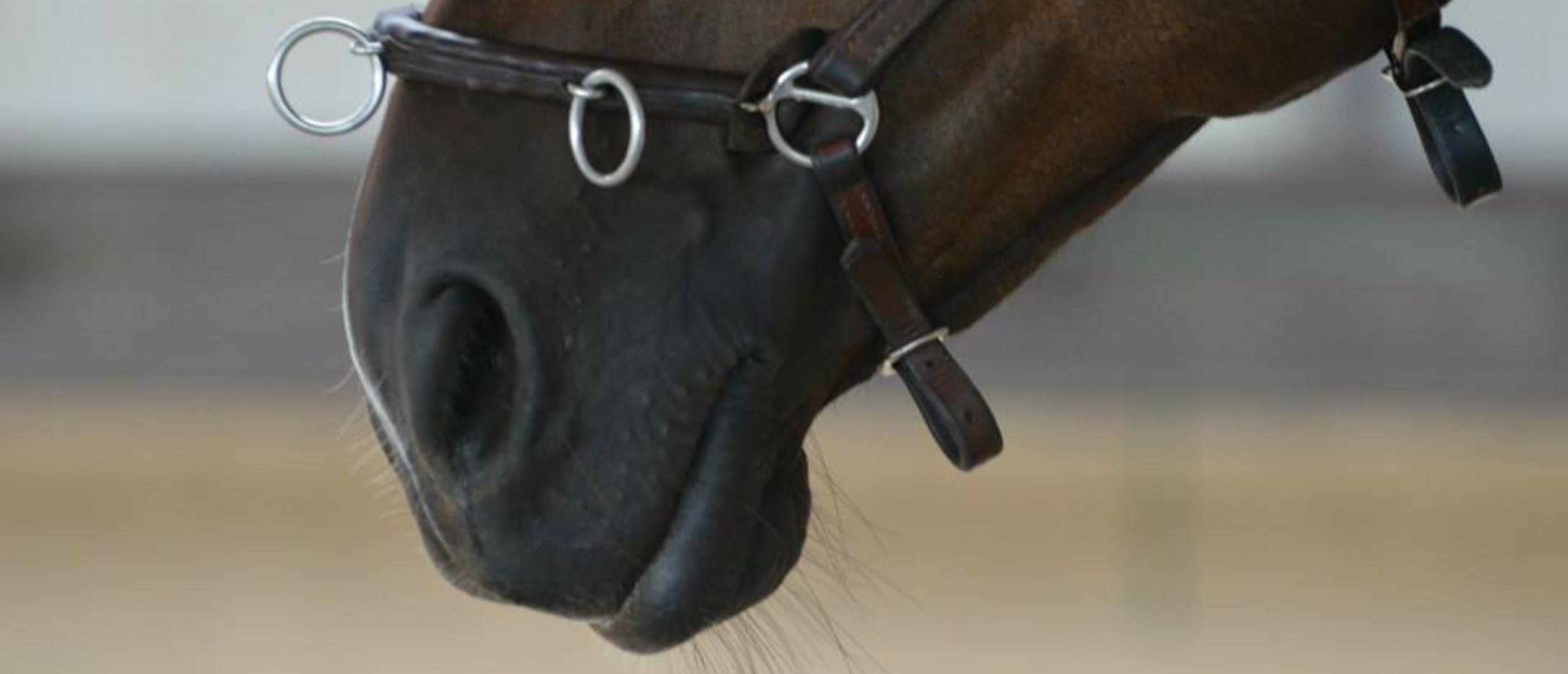
Forward-down
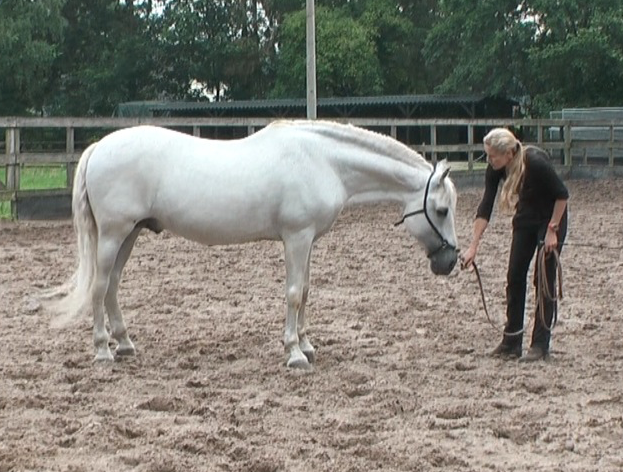
The long term goal of Straightness Training is achieving flexibility, gaining strength, build muscle and improving your horse’s overall health and maintaining it for a lifetime. This goal is achieved through a logical system of progressive exercises.
The very first exercise to teach the horse is in Straightness Training is, to bring its head and neck forward-down. The horse stands still in this exercise.
Goal
This is an important exercise to teach your horse the use of the cavesson and to relax the horse.
- The cavesson is an important tool in the communication between horse and trainer. A horse must first learn to understand the feeling of the cavesson and the aids that can be given through it. By nature, the horse does not know it should move away from the pressure of the cavesson. It is important to teach the horse to move away from the pressure at an early stage. The horse must learn to trust the connection that is made with the trainer and the cavesson. This is why the first exercise is to teach the horse to bring its head and neck forward-down.
- Doing this exercise puts the horse in a position that is relaxing, which helps to make the horse feel at ease.
- Go as low with the head as when the underneck softens and relaxes. Don’t go lower, because this will bring the weight too much on the front legs.
Teaching the exercise to the horse
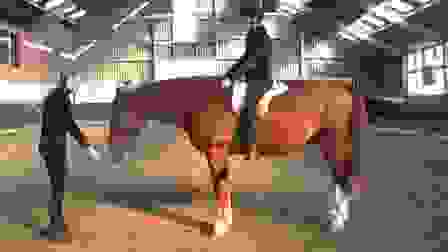
An important part of dealing with and training horses is the element “yielding to pressure’:
- You close your hand around and apply downwards pressure on the longe line connected to the cavesson.
- The horse yields downwards at the moment you apply pressure.
- The instant the horse yields, you should open your hand and release the pressure, and reward the horse.
Timing & dosing is key!
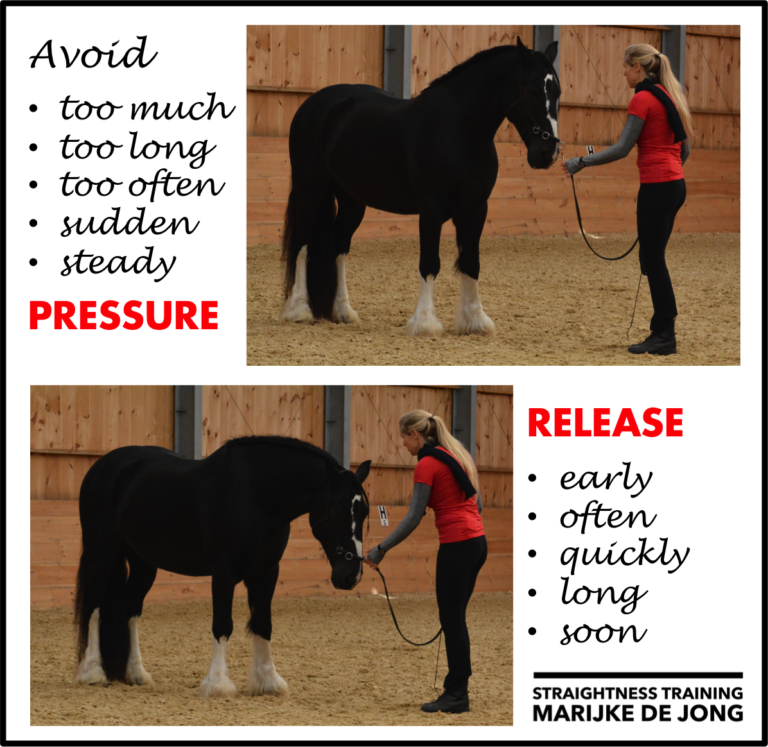
The better your timing and dosing of pressure and release, the better the horse will understand and execute this exercise.
Pitfall of the human being in the use of the pressure are the following ways of applying pressure:
- Too long
- Too much
- Too often
- Unexpected
As a result the horse will either go against your pressure (bringing the head up) or ignore your request (resisting in the same position).
So adequate timing and dosing of the pressure is important, but even more important is the release of the pressure!
So if you don’t get the expected result, change your approach, and refine your pressure/release technique.
How low should you go?
Often it is asked, how low should you go when you ask the horse to lower his head?
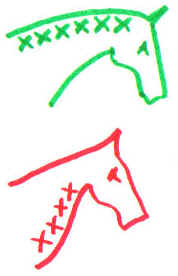
The horse should lower its head as far as the point when the muscles in the underside of the neck relax and the topline stretches. It is not necessary to go lower, because that will shift the weight of the horse too much onto the front legs.
And remember:
‘Forward down’ is only one of the six keys of ST!
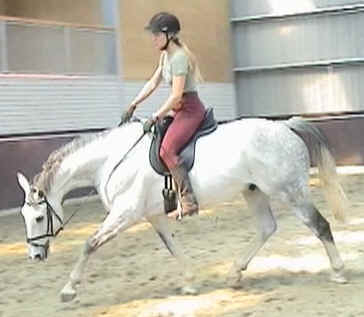
The lowering the horse’s neck is an important part of riding horses, but it is not the only part! We need all six keys to avoid too much weight on the front legs and to develop our horse’s body in a healthy way.

